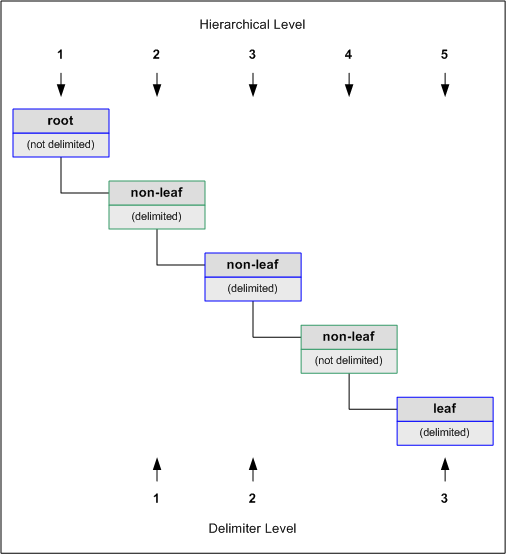Delimiter Levels
Delimiter levels are assigned in order to those hierarchical levels of an Encoder that contain at least one node that is specified as being delimited. If none of the nodes at a particular hierarchical level is delimited, that hierarchical level is skipped in assigning delimiter levels.
Delimiter lists are typically specified on the root node, so that the list applies to the entire Encoder. The root node itself is typically not delimited, so that Level 1 would apply to those nodes that are children of the root node. See the following figure and example.
Figure 8 Encoder Hierarchical and Delimiter Levels

For example, if you want to parse the following data:
a^b|c^d|e |
you might create a Custom Encoder as follows:
In this example, the delimiter list is specified on the root node, which is not delimited; therefore, the list has two levels:
The Level 1 delimiter (|) applies to element_1, element_2, and field_5. The Level 2 delimiter (^) applies to field_1 - field_4.
If the root node is set to be delimited, the Level 1 delimiters will then apply to it. Using the above example, the Level 2 delimiter (^) would then apply to element_1, element_2, and field_5, and a new Level 3 delimiter would apply to field_1 - field_4.
Delimiter lists can be much more complex than this very simple example. For instance, you can create multiple delimiters of different types at any given level, and you can specify a delimiter list on any node within the Encoder— not only the root node as shown in the example. See Defining a Delimiter List for a step-by-step description of the procedure for creating a Delimiter List.
- © 2010, Oracle Corporation and/or its affiliates
